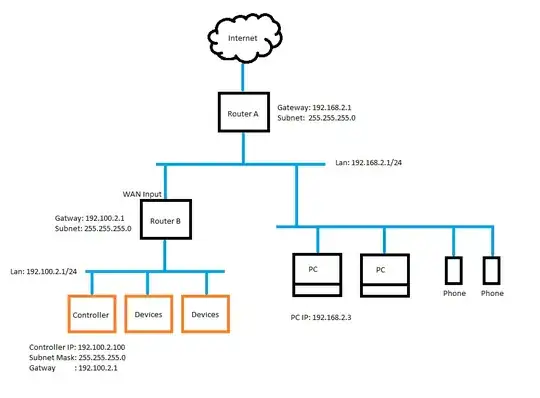I've come across an issue, and after spending days investigating I've realised I need some advice. My networking skill level is still quite low.
I've got two routers, with two LANs. I've connected one of the routers to the other via a LAN <-> WAN connection, creating a separate network to contain controller and devices. The main reason for two routers is so that I can have a separate DCHP server for Router B's connections. See below for the image:

I have access to the controller via Router A's network, I can get to the web based GUI to see all my devices on the network via setting the ports/virtual servers on Router B. However, I have code on the controller that needs to monitor devices on Router As LAN. The code needs access to the subnet so that it can resolve IPs to MAC addresses (ARP requests). Currently I can ping from Router B's devices to Router A's devices, but can't resolve IP to MAC addresses (I'm using NMAP). I believe this is because ARP requests only work in the same subnet.
Is it possible to add a second static IP in the same subnet as Router A's LAN (outside of DHCP range of A) to the controller on Router B's network, and somehow route this through Router B so that the requests are resolved and sent back?
If not, is there an alternative?
Additional Information:
Controller : Linux - Raspbian
Router A: Belkin Modem-Router
Router B: Edimax Router